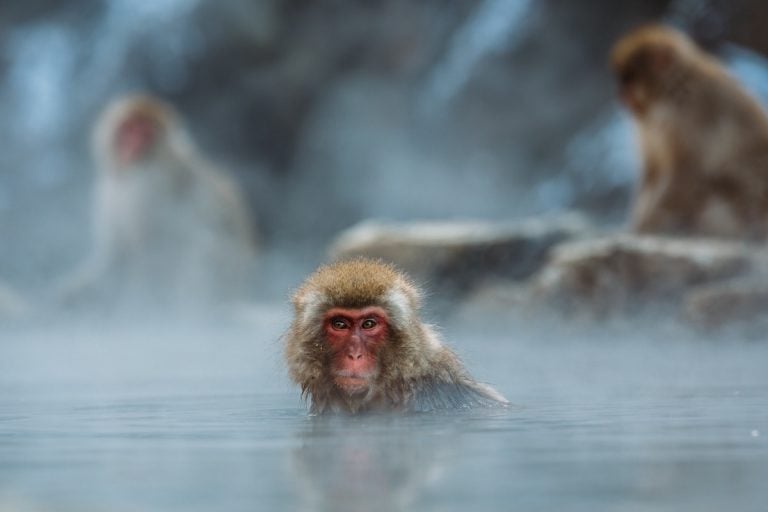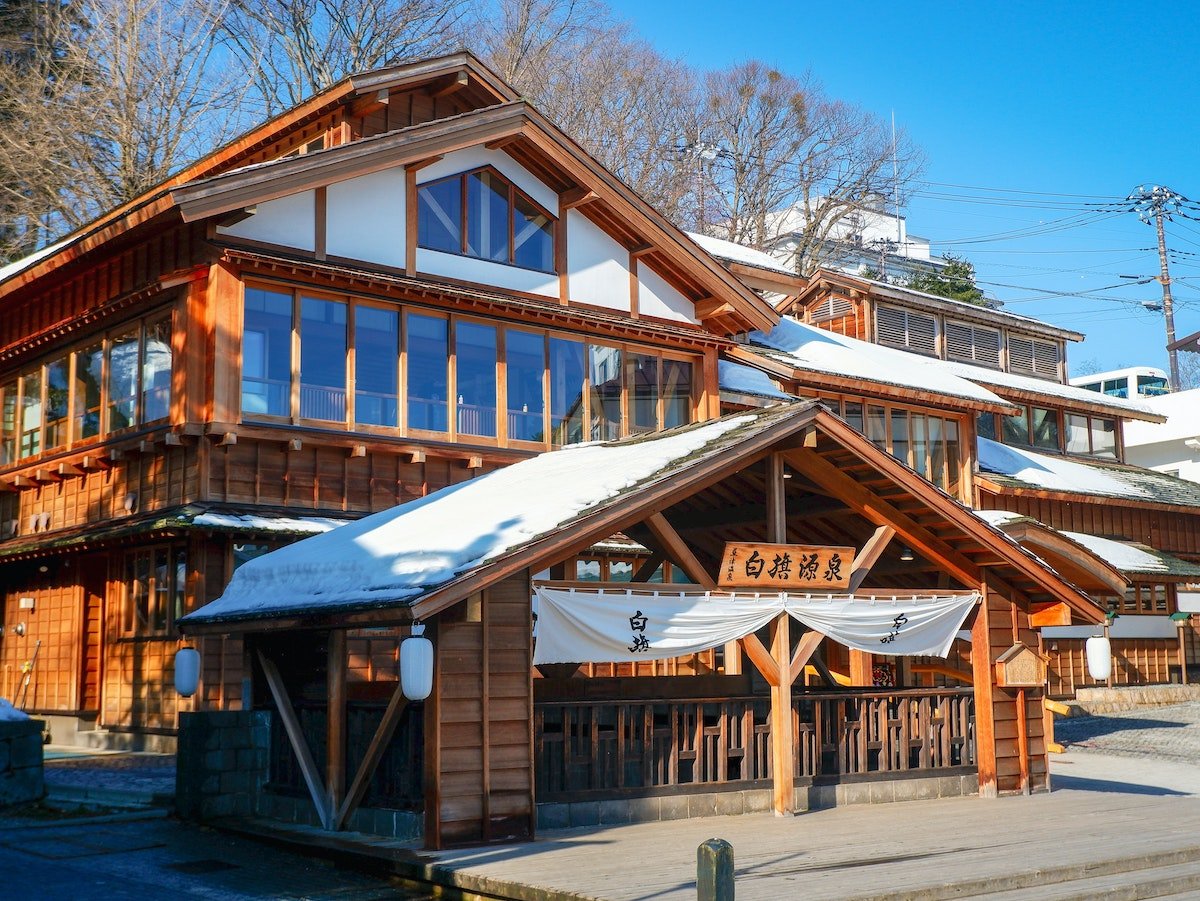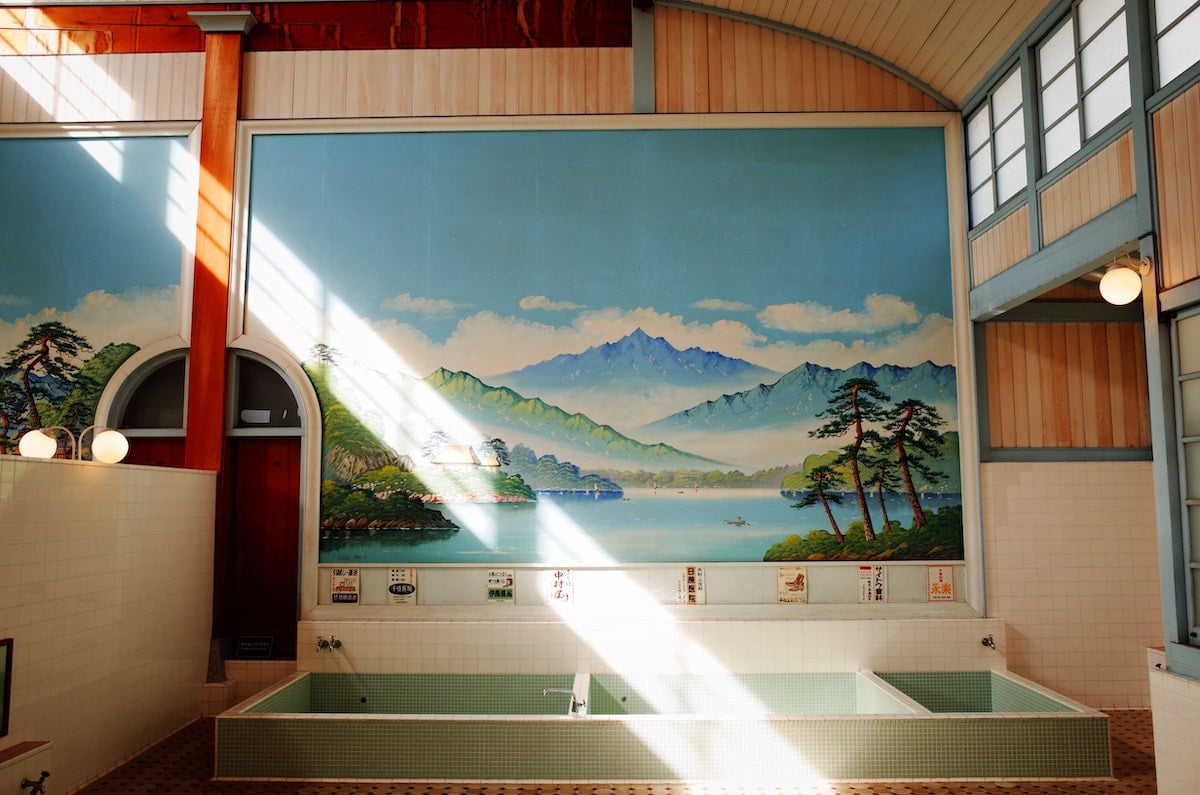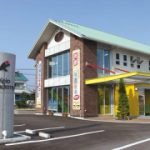
One of the most popular ways to relax in Japan is a trip to a bathhouse. It’s popular among Japanese people and foreigners alike, with family, friends, and even colleagues entering in droves. However, for foreigners who have never been to a bathhouse or are from a region where bathhouses are not common, entering into one can be intimidating. This article will tell you all you need to know about Japanese bathhouse basics so that you can take in the experience and fully relax.
Bathhouses in Japan: Onsen versus sentō

Onsen
There are roughly two types of bathhouses in Japan, onsen (温泉) and sentō (銭湯). While both are both baths where one can relax and the etiquette around using the them are generally the same, there are important differences to point out so that you can choose which will best fit your excursion.
The characters for onsen are 温 on, which means “warm” or “heated,” while 泉 sen is “spring” or “fountain.” This illustrative character combination is used for natural thermal hot springs, which are present across the country. Some towns, such as Kyushu’s Beppu or Hokkaido’s Noboribestu are immensely famous for the springs’ heat and the resulting amount of onsen facilities present in the area. Since the hot water is from the springs, the environment of onsens typically have designs that emphasize natural beauty – such as floor to ceiling windows that overlook the mountains or grand murals of landscapes along the walls. Onsens are for kicking back and taking in the ambiance.
Sentō, on the other hand, are slightly different. Written as 銭湯, 銭 sen represents “coin” while 湯 tō means “bath” or “hot water.” Therefore, sentō are places where one pays to clean oneself. A significant difference between sentō and onsen is that sentō almost always artificially heated and the environment is more barebones. The spaces are much smaller, with fewer bath options and do not have the same opulence many onsen do. They are easy to find and especially convenient when you’re looking to get out of the house and submerge yourself without leaving your neighborhood.

Sento
Bathhouse Etiquette
Bathhouses across the world have different customs and rules. In order to avoid any discomfort, confusion, or embarrassment, it’s important to learn the rules of these establishments. Fortunately, the etiquette for both onsen and sentō are nearly identical.
Take your shoes off
Your shoes should be left in the lockers that are placed by the entrance. From this point forward, you may walk barefoot or with socks, and some places may have slippers set out to borrow.
Pre-pay
Go to the counter, turn over your shoe locker key, and specify if you’re using just the baths or if you’d like a massage or any other service they provide. There are sometimes packages that you can purchase. Here you will also receive towels, loungewear, and the most important accessory – your entrance bracelet. This will open your clothes locker and allow you to make purchases without having to carry money around the bathhouse complex.
Head to the changing room lockers
Depending on the facility, this may or may not be the last set of lockers. Regardless, from this point you will put away your day clothes and all your belongings. If it is clear that the baths are connected to this locker room, feel free to proceed to the wash stations. Japanese bathhouses require full nudity, but you may bring you small, rectangular towel with you. Many people find it polite to cover parts of the body with this towel when not in the water, but it’s certainly not a rule.
If the bathes are not connected to the locker room, wear the loungewear that was provided when you paid or available in the locker room and proceed to the last locker room connected to the baths. Leave the loungewear in the locker and make your way to the wash station.
Shower First
Washing oneself is highly important prior to entering the baths. Typically, these stations are stalls with buckets, faucets, shower heads, a short stool, a mirror, plus shampoo, conditioner, and body wash. Treat this as a normal shower and wash yourself thoroughly.
Enjoy the baths
There are often a variety of baths to choose from that range in both temperature and composition. There are baths that are 19º C (66º F) and others that are 40º C (104º F). There are often various herbal mixtures that are seasonal, rotating, or popular in the region, and others that are infused with minerals to promote good health, all of which will be explained on hanging plaques near the baths. Onsens will have far more options than sentō.
Check out the other spa options
Between the baths at onsens there are often saunas. Dry saunas have regularly timed “experiences” where workers chant while increasing the heat of the sauna by using billows, whereas steam rooms and salt saunas are a more subdued affair.
Wash, wash, wash!
When you’ve been out of the water for a while, leave a sauna, or left to go to the bathroom, there will be a station to rinse your body before reentering the baths. This is very important. If you’ve left for a long period of time to eat in the cafeteria or meet your friends who were enjoying other services, taking another shower is recommended.
Leaving
Wipe yourself down before reentering the locker room. There will be vending machines with popular post-bath drinks such as milk, coffee milk, and of course water, as well as an area equipped with hair dryers. When you’ve collected your belongings and returned the loungewear, you can return to the register to receive your shoe locker key and pay for the items you purchased with your bracelet.
Things to remember
Both onsen and sentō are gender separated. Hotels or some onsen may offer private baths that allow for a mixed party to enter together.
Tattoos, generally speaking, are highly discouraged if not forbidden. Though many places will put up signs in English stating their rules on tattoos, it’s best to check the bathhouse’s website or call in advance. Small tattoos may be hidden by towels while other bathhouses may provide patches, however, this is not considered standard.
Lastly, and possibly most importantly, all body types and ages are present at bathhouses. It is a communal atmosphere that is shared between friends, family, and the greater community. As long as you follow the above rules and suggestions, there’s no reason why onsen and sentō can’t become a part of your regular self-care routine. Or, with all the historic bathhouses around the country, be a vacation destination!















